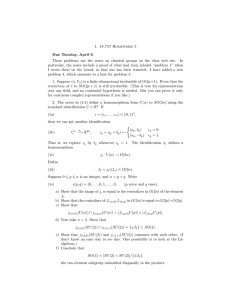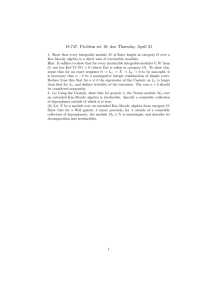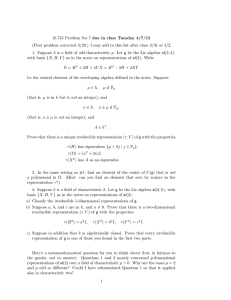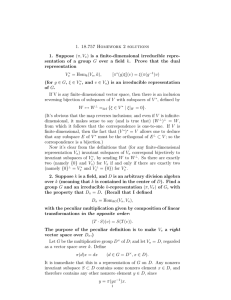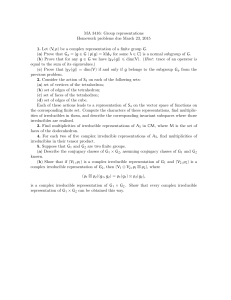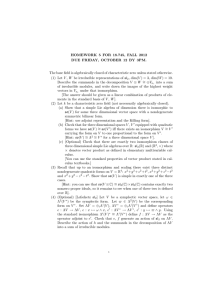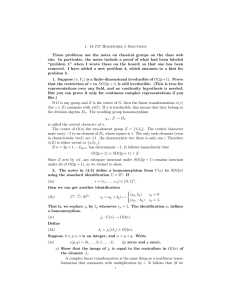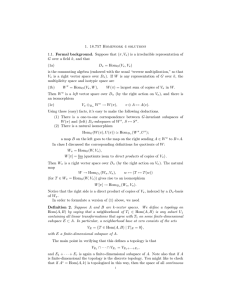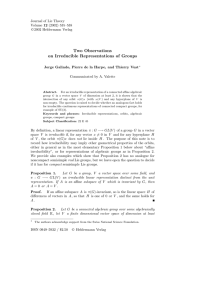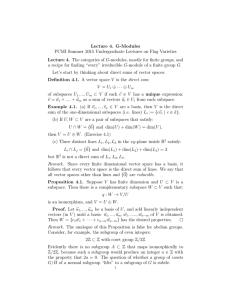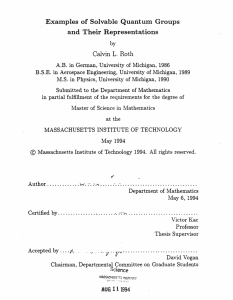1. 18.757 Homework 4 Due Thursday, March 14.
advertisement
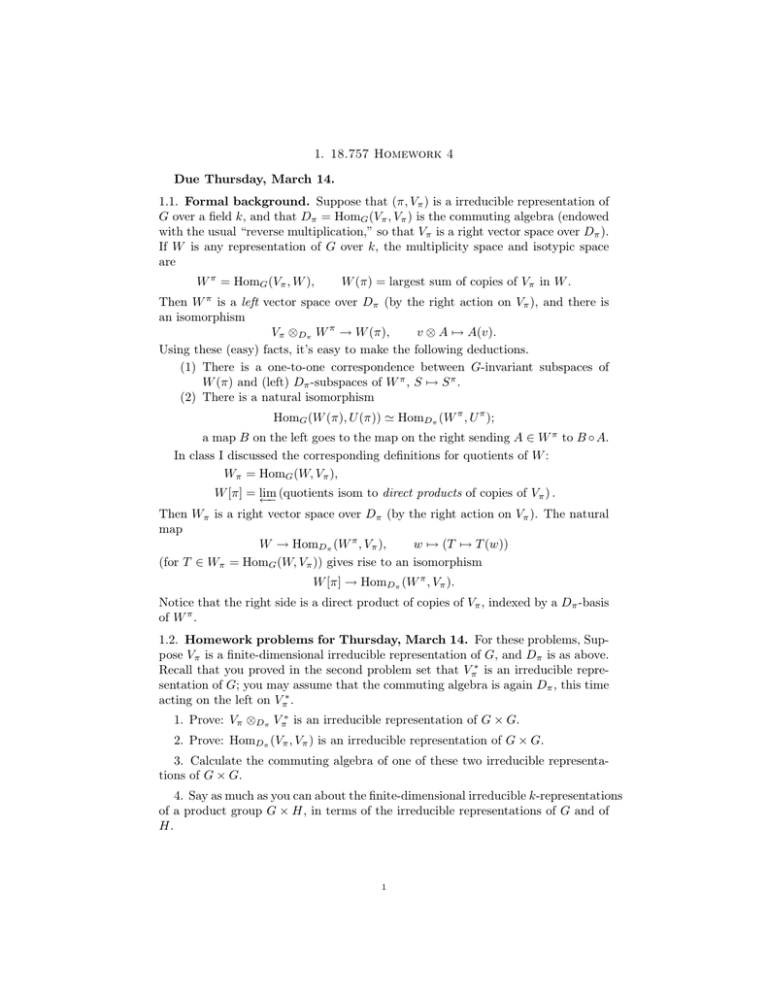
1. 18.757 Homework 4 Due Thursday, March 14. 1.1. Formal background. Suppose that (π, Vπ ) is a irreducible representation of G over a field k, and that Dπ = HomG (Vπ , Vπ ) is the commuting algebra (endowed with the usual “reverse multiplication,” so that Vπ is a right vector space over Dπ ). If W is any representation of G over k, the multiplicity space and isotypic space are W π = HomG (Vπ , W ), W (π) = largest sum of copies of Vπ in W . Then W π is a left vector space over Dπ (by the right action on Vπ ), and there is an isomorphism Vπ ⊗Dπ W π → W (π), v ⊗ A 7→ A(v). Using these (easy) facts, it’s easy to make the following deductions. (1) There is a one-to-one correspondence between G-invariant subspaces of W (π) and (left) Dπ -subspaces of W π , S 7→ S π . (2) There is a natural isomorphism HomG (W (π), U (π)) ' HomDπ (W π , U π ); a map B on the left goes to the map on the right sending A ∈ W π to B ◦ A. In class I discussed the corresponding definitions for quotients of W : Wπ = HomG (W, Vπ ), W [π] = lim (quotients isom to direct products of copies of Vπ ) . ←− Then Wπ is a right vector space over Dπ (by the right action on Vπ ). The natural map W → HomDπ (W π , Vπ ), w 7→ (T 7→ T (w)) (for T ∈ Wπ = HomG (W, Vπ )) gives rise to an isomorphism W [π] → HomDπ (W π , Vπ ). Notice that the right side is a direct product of copies of Vπ , indexed by a Dπ -basis of W π . 1.2. Homework problems for Thursday, March 14. For these problems, Suppose Vπ is a finite-dimensional irreducible representation of G, and Dπ is as above. Recall that you proved in the second problem set that Vπ∗ is an irreducible representation of G; you may assume that the commuting algebra is again Dπ , this time acting on the left on Vπ∗ . 1. Prove: Vπ ⊗Dπ Vπ∗ is an irreducible representation of G × G. 2. Prove: HomDπ (Vπ , Vπ ) is an irreducible representation of G × G. 3. Calculate the commuting algebra of one of these two irreducible representations of G × G. 4. Say as much as you can about the finite-dimensional irreducible k-representations of a product group G × H, in terms of the irreducible representations of G and of H. 1

